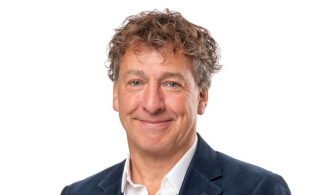Amid fears of a global recession and escalating costs, leading distributors share how they are preparing for the new era in the streaming wars.
Peak TV does finally appear to have peaked; that’s what FX Chairman John Landgraf, who coined the term in 2015, told reporters at the Television Critics Association (TCA) Press Tour earlier this year. Last year saw the release of 599 scripted shows across broadcast, cable and streaming; a new record—and one that is likely to stand. As it turns out, unlimited expenditure on content is not enough to overcome the compounding factors of inflation, market saturation, escalating costs and a weakened advertising market. There’s also the matter of viewer fatigue with multiple subscriptions and what may have been an untenable amount of content.
As the streaming wars take on a new dynamic—different battlegrounds, reallocated content spend—and channels and platforms struggle with diminished ad revenues, the challenges for content distributors are significant. But those surveyed for this piece were bullish on the prospects for the business this year despite the worrisome economic headwinds—as long as you know how to be agile.
“The days of commissioning shows just to have volume are gone—it was never sustainable,” observes Cathy Payne, CEO of Banijay Rights. “While we will always see the high-end, premium and expensive original signature pieces, the rest of the slate needs to reflect a more affordable price point. How we produce at these price points will require innovation.”
And innovation is happening across the landscape as everyone tries to figure out how to navigate the current climate. We’re seeing wide-scale international co-productions like The Swarm, which features a slew of broadcast and streaming partners, several producers and two distributors: ZDF Studios and Beta Film. Amazon Studios is experimenting with building a global tentpole franchise with Citadel, which launches with a U.S. series to be followed by Italian and Indian chapters. Disney+ secured a landmark deal with BBC Studios to become the global home of Doctor Who, the latest proof of a new openness on the part of many streamers to explore models outside of fully funding productions for the world.
“Producers are slightly shaken that platforms will not buy as much as they did before,” says Fredrik af Malmborg, CEO of Eccho Rights. “When the platforms are cutting their budgets, we go to them with more of an acquisition route than a commissioning one. We have series where we get an anchor somewhere, and then we sell the rest as an acquisition.”
“With higher interest rates, we’ve had to rethink our financing models on several projects,” adds Vanessa Shapiro, CEO of Nicely Entertainment. “And the real problem within all of this is that the license fees and MGs paid out from traditional outlets have essentially remained unchanged—which has caused those dollars to no longer stretch as far as they once did, especially when payment terms extend over multiple quarters.”
Af Malmborg adds that some producers have become disaffected with the cost-plus model at the global streamers, creating opportunities for companies like Eccho Rights—which now has the backing of Herbert L. Kloiber’s Night Train Media—to step up with development funding and find ways to get shows off the ground with multiple partners.
“I’ve always believed that IP should stay with the producers,” af Malmborg says. “We produce high-level series for $25 million to $40 million, we use tax breaks and other things around the world and our own investment and then sell the license to the U.S. [and other markets].”
Kloiber, CEO of Night Train Media and chairman of Eccho Rights, agrees that this new climate can benefit companies like his.
“Our business model is well-suited to this change,” Kloiber says. “We are financing shows, films or documentaries that, if commissioned by a big streamer, would cost them a lot of money, and they’re all rolling back budgets. We can get these things into production with smarter budgets using local subsidies and tax credits out of Europe, mostly, and then offer them to the marketplace as a co-pro or acquisition, probably at a more affordable rate and a faster path to production than through the commissioning route. Not everybody needs to own rights for the world forever. In that sense, our model is well-suited for the shift that’s going on.”
PARTNER POTENTIAL
Shapiro also sees her company’s positioning as a strength amid the changes in the market.
“We have sensed that streamers have become more collaborative in their D2C content strategies. For a while, streamers and TV networks both had a fear of cannibalization that time has proven isn’t a true concern. A traditional broadcast feed speaks to one audience, while a streaming platform speaks to an entirely different audience; they don’t contaminate one another. So yes, we’ve seen that many of our streaming partners have grown much more receptive to windowing strategies and creative financing models. We’re excited to continue growing with our streaming partners—both on originals and second-window releases.”
Shapiro adds that the budgets Nicely is operating with are far more manageable in the current climate than the eye-popping amounts spent by the streamers over the last few years.
“Although there has certainly been a great deal of belt-tightening from larger players, the type of content Nicely Entertainment provides tends to be quite reliable and low-risk. We speak to a core need in the market: modestly budgeted genre films. Our titles organically target female audiences and are very co-viewer friendly, making them perfect for advertisers, streamers and traditional broadcast outlets.”
Dori Media Group, similarly, has seen sustained demand for its slate, both in terms of tape sales and formats. “The rise of new platforms that need content has had a positive effect on our sales since we have a deep library,” says Nadav Palti, chairman and CEO. As for managing escalating production costs, Palti says the company is pursuing more co-pro alliances and tapping into private equity funding.
FUNDING PUZZLE
“If you’re an independent boutique company, it is very important that you have reliable financing or capitalization available to weather uncertain situations for a few years,” says Kloiber, whose Night Train is backed by Serafin Group. “It’s also the relationships and reputation you have with your banks. How well have you performed in the eyes of the banks with the projects you’ve embarked on? Were they profitable on average? How quickly is the investment monetized? It is helpful for us to have a partner like Serafin to allow us to continue investing and maybe take six months longer to recoup money from the marketplace because we don’t want to be forced to take a poor deal today. The good thing is that our private equity investors aren’t the typical, ‘We need to build this and, in five years, sell it.’ If you have that type of private equity backing, this marketplace is challenging because you constantly need to show growth every quarter. That can create adverse pressure and might push you into poor investments. Luckily, our investors are long-term oriented.”
Night Train’s investments—Eccho Rights, BossaNova Media and Curve Media—were part of the wave of consolidation across the distribution and production sector last year. Banijay, Fremantle, BBC Studios, ITV Studios, All3Media and many others snapped up successful producers or distribution catalogs. Scale remains important, especially in a challenged economy, but the executives we spoke to for this piece are far more focused on ensuring they have the titles that the marketplace needs—from the top-end, costly series to shows with more manageable budgets and easier timelines—that will be able to cut through the clutter.
“In scripted, broadcasters and platforms still want those big premium series,” says Banijay Rights’ Payne. “But they also want those returning, middle-of-the-road pieces, good crime stories, relationship shows and thrillers. There is always a constant demand for what I call the ‘super domestic’ rather than ‘premium.’”
Distributors are also watching the developments in the AVOD and FAST spaces to see if the success seen in the U.S. will extend internationally. “Both provide new avenues for exploiting libraries and catalog, which makes up most of these channels,” Payne notes. “Banijay currently runs 21 unique FAST feeds that are syndicated more than 80 times globally, and all of these operate on a revenue-share basis—so AVOD and FAST are part of the distribution life cycle of all content.”
“We’re excited about the growth of ad-based models, especially as the major U.S. AVOD companies continue their international expansion,” says Nicely’s Shapiro. “Unlike subscription—which is a clear-cut model—advertising does play out differently territory by territory. Some nations have heavy regulations in place—especially as it relates to children’s content—but on a larger scale, metrics and ratings will allow advertising entities to better calculate AVOD placement and integration. We know this change will greatly shift how media properties are financed on a global scale; it’s a move we’re both anticipating and excited about participating in. AVOD has been a massive growth vehicle in the U.S.; although price points are currently lower in Europe and elsewhere, the numbers will calibrate, and it will be a major payday.”
The buzz around the increased usage of ad-supported platforms prompted MIPTV organizer RX France to introduce the FAST & Global Summit at the market in Cannes this year.
“We see FAST channels as the biggest boom in the distribution business because it puts the distributors back in power,” says Lucy Smith, entertainment division director at RX France. “Traditional distribution was supposed to be falling by the wayside, but it’s never felt more dynamic—not only with the emergence of FAST but with studios and platforms loosening global stands on rights and licensing to third parties again.”
Ultimately, Palti notes, “Clients are always looking for quality content—both new or library. More than ever, they are open to content from all over the world in different languages. If the story is good and the production quality is high, clients will be interested.”






